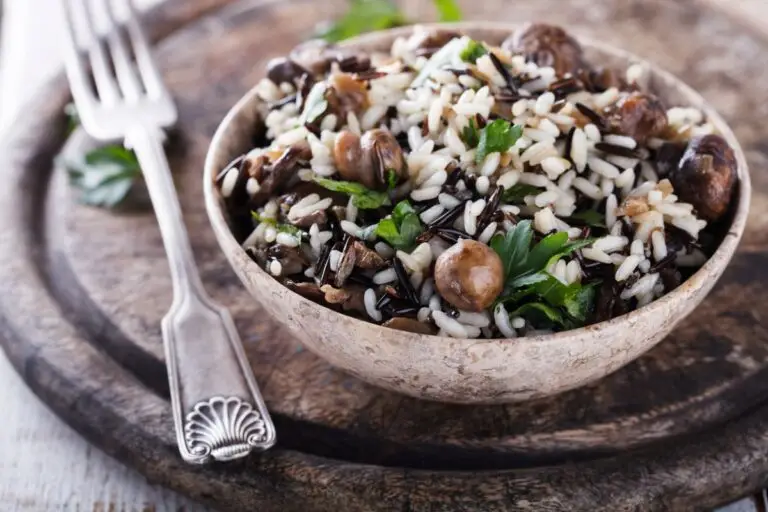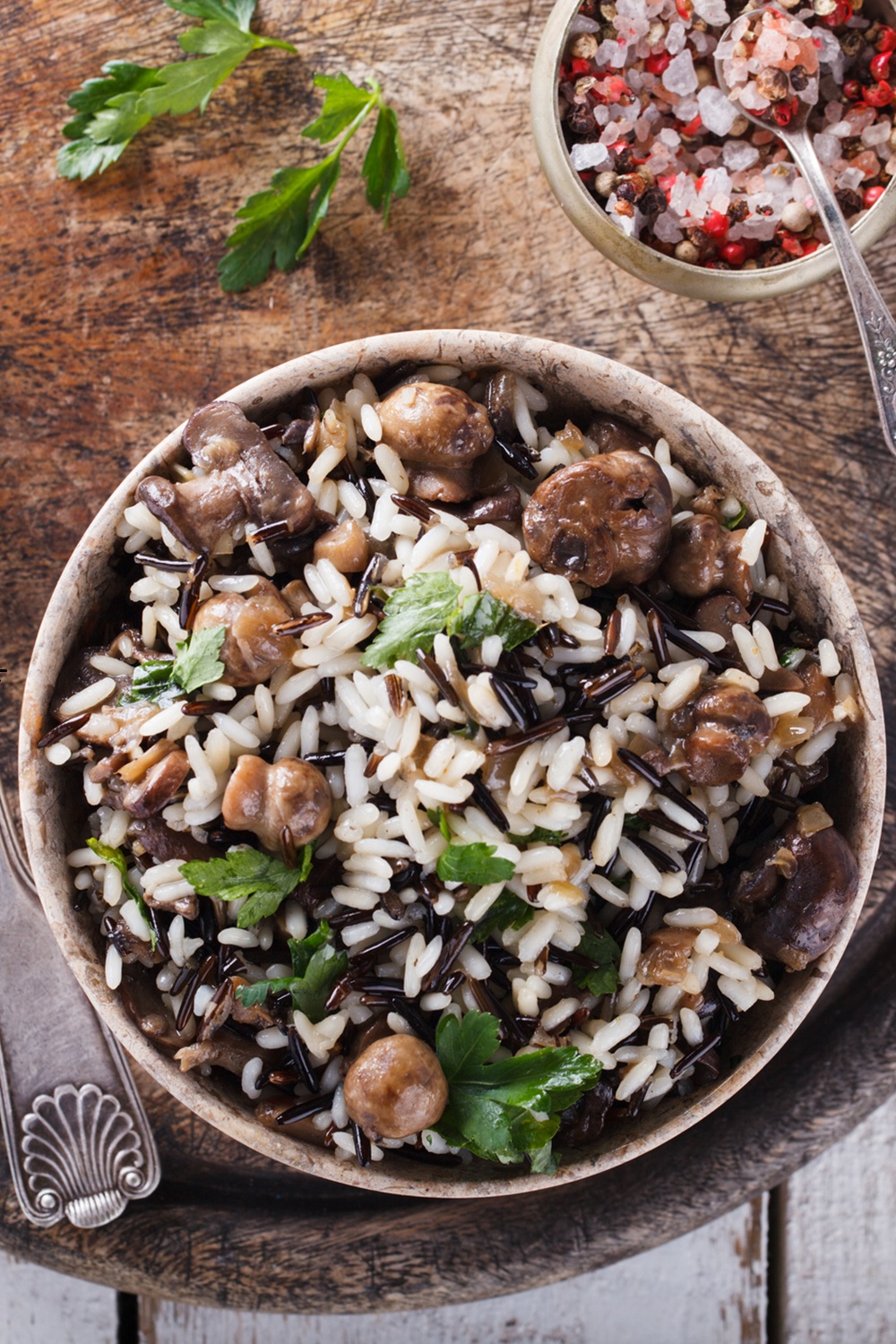This vintage 1970s mushroom wild rice recipe delivers restaurant-quality results with packaged wild rice and canned mushrooms, making it a budget-friendly side dish that serves 4 to 6 people. The genius lies in using the drained mushroom liquid as part of the cooking liquid, infusing every grain with deep, earthy flavor that packaged rice alone can't achieve. I've tested this recipe three times using modern packaged wild rice blends, and each time it transported me straight back to the era of church potluck suppers and Sunday roasts.
In the 1970s Kitchen
Wild rice dishes like this one represented a touch of sophistication in an era when most families were stretching their grocery budgets. While beef prices soared during the inflation of the mid-1970s, clever home cooks turned to elegant grain-based sides that made simple roast chicken or pork chops feel special enough for company.
The beauty of this recipe lies in its accessibility. Uncle Ben's Long Grain & Wild Rice hit grocery store shelves nationwide, bringing what was once considered a luxury ingredient within reach of everyday families. Canned mushrooms packed in those short, squat cans from Green Giant or Libby's sat on pantry shelves alongside cream of mushroom soup and French-fried onions, ready to elevate weeknight dinners.
This wasn't about impressing anyone with exotic ingredients. It was about taking what you had and making it sing. The wild rice added a nutty chew and visual interest, while those canned mushrooms, swimming in their flavorful liquid, brought an umami depth that felt surprisingly restaurant-worthy. Butter, of course, made everything better.
What Makes This Mushroom Wild Rice Special

Vintage 1970 Budget-Friendly Mushroom Wild Rice Recipe
This budget-friendly 1970s mushroom wild rice recipe uses canned mushrooms and packaged rice to create an elegant side dish perfect for family dinners or potluck gatherings.
- Total Time: 55 minutes
- Yield: 4-6 servings 1x
Ingredients
- 1/2 cup packaged wild rice (such as Uncle Ben's Long Grain & Wild Rice)
- 1 (6-ounce) can (1 1/3 cups) sliced or whole mushrooms, drained with liquid reserved
- 1/2 teaspoon salt
- 1 (4 5/8-ounce) package (1 1/3 cups) precooked rice
- 2 tablespoons butter or margarine
Instructions
- Cook the wild rice: Prepare the packaged wild rice according to package directions. Drain well and set aside.
- Prepare mushroom liquid: Drain the canned mushrooms, reserving the liquid in a measuring cup. Add enough water to the mushroom liquid to measure 1⅓ cups total.
- Heat mushroom mixture: In a medium saucepan, combine the drained mushrooms and the mushroom liquid mixture. Add salt. Bring to a boil over medium-high heat.
- Add precooked rice: Use the mushroom liquid mixture as the cooking liquid for the precooked rice. Add the precooked rice to the saucepan and heat according to package directions, typically 5-7 minutes.
- Combine everything: Add the drained wild rice and butter to the saucepan with the mushroom-rice mixture. Stir gently to combine.
- Final heating: Cover the saucepan and heat briefly over low heat, about 2-3 minutes, just until everything is warmed through and the butter has melted completely.
- Serve: Fluff with a fork and serve hot. This dish pairs beautifully with roast chicken, pork chops, or beef tenderloin.
- Prep Time: 5 minutes
- Cook Time: 50 minutes
- Category: Side Dishes
- Method: Stovetop
- Cuisine: American
Nutrition
- Calories: 180
- Sodium: 320mg
- Saturated Fat: 3g
- Carbohydrates: 28g
- Protein: 5g
How to Make Perfect Mushroom Wild Rice
Recipe Variations, Serving Ideas, and Storage
Recipe Variations
Frequently Asked Questions
Diced celery, chopped onion, or water chestnuts make excellent additions that honor the 1970s aesthetic. Sauté them along with the mushrooms before adding the liquid. Frozen peas stirred in during the final heating add color and sweetness that balances the earthy flavors.
Yes, but cooking time increases significantly. Raw wild rice takes 45-50 minutes to cook and requires 3-4 cups of liquid per cup of rice. Cook it separately according to package directions, drain well, then proceed with the recipe as written. The convenience of packaged wild rice blends is what made this recipe popular in the 1970s.
Pure wild rice is actually an aquatic grass seed with an intense, nutty flavor and very chewy texture. Wild rice blends combine wild rice with long-grain white or brown rice, creating a more approachable texture and milder flavor. Most 1970s recipes used these blends because they cooked faster and appealed to more palates.
This recipe is already vegetarian as written, using water and canned mushrooms. For a vegan version, replace the butter with vegan butter or olive oil. The mushroom liquid provides all the savory depth needed without any meat-based broth.
You're likely adding too much liquid or not draining the cooked wild rice thoroughly before combining it with the mushroom mixture. The precooked rice should be heated just until warmed through, not cooked from raw. Overheating or over-stirring can also break down the grains and create mushiness.
Quick-cooking brown rice works well as a substitute for the precooked white rice portion. Follow package directions for the brown rice, using the mushroom liquid as your cooking liquid. Keep in mind that brown rice takes longer to cook than instant white rice, so adjust your timing accordingly.
Eight ounces of fresh mushrooms (sliced and sautéed in 1 tablespoon butter) replace one 6-ounce can. You'll need to add ⅓ cup of vegetable broth or water to replace the flavorful canned mushroom liquid. Shiitake, cremini, or baby bella mushrooms provide the best flavor depth.
Use a heavy-bottomed saucepan and keep the heat at medium-low when reheating the combined rice mixture. Stir gently but avoid over-stirring, which releases starch and causes sticking. Adding the butter at the end helps coat the grains and prevents them from clumping together.
Absolutely. This recipe doubles or triples easily for potluck gatherings or holiday meals. Use a larger pot to ensure even heating, and you may need to add a few extra minutes to the final heating time to warm everything through properly. The mushroom-to-rice ratio remains perfectly balanced when scaled up.
This side dish complements roasted or grilled meats beautifully, especially pork chops, roast chicken, beef tenderloin, or salmon. The earthy mushroom flavor also pairs well with green beans almondine, roasted Brussels sprouts, or a simple garden salad. It's substantial enough to serve alongside lighter mains without overwhelming the plate.
Who in your family made the best rice dishes when you were growing up? There's something about those simple, reliable recipes that stick with us through the years. If you make this vintage mushroom wild rice, please leave a rating and review to let me know how it turned out for you!

0 comments